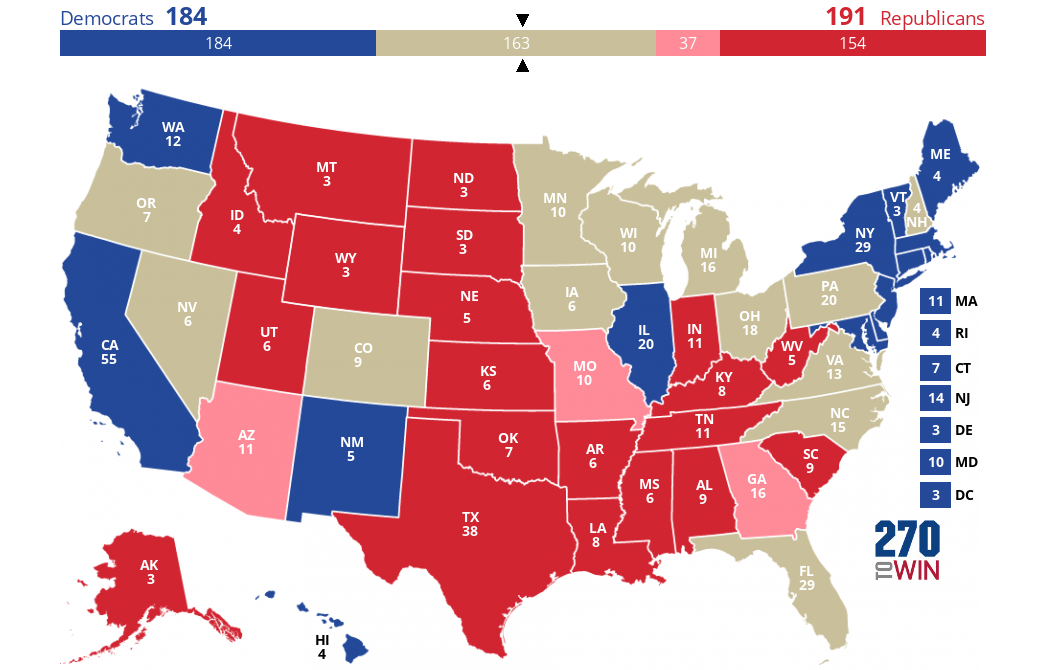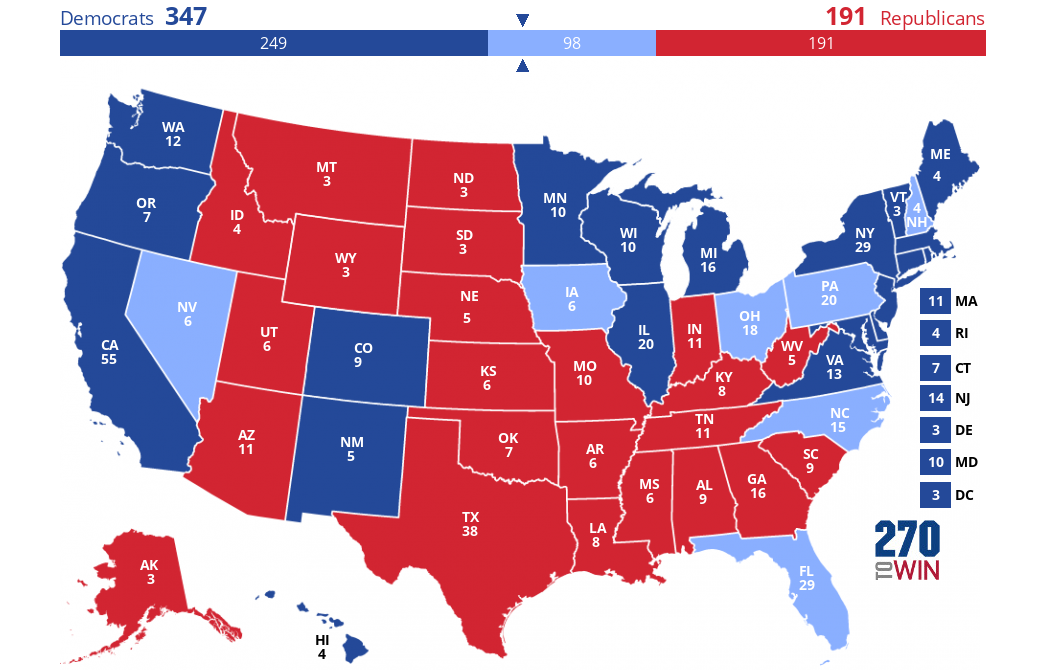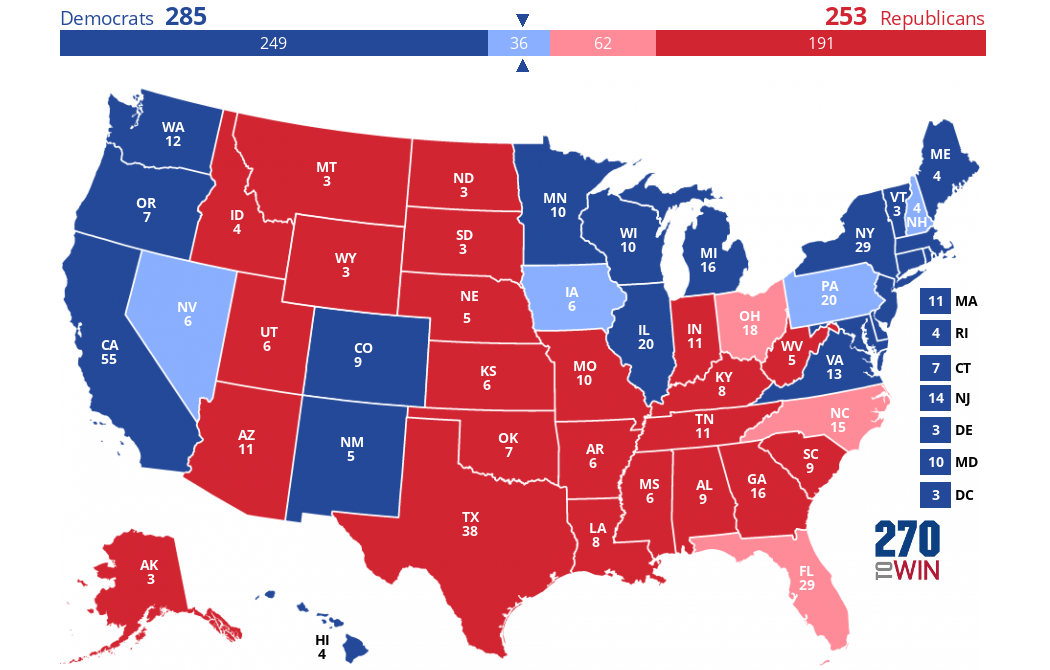In 100 days, Americans will head to the polls and we will learn whether Hillary Clinton or Donald Trump will become the 45th president of the United States.
The presidential race isn’t about popular votes. It’s about electoral votes. Which means while red states this year may vote more heavily for Trump, and blue states more heavily for Clinton, in the end the popular vote doesn’t matter — it’s about winning the electoral votes in purple states.
And the two purple states to keep your eye on this year are, no surprise, Ohio and Florida. Donald Trump needs to win both. If he loses both he has little path to 270 electoral votes.
After studying state polls, and averaging them together, I’m ready to make my first prediction on how the map will look come November.
First, here are the states that, as of today, we’ve called for Clinton (states in blue) and for Trump (states in red). Clinton leads in the “firm” states 184 electoral votes to 154.
The states “in play” are in grey.
Now let’s shade the states leaning toward Trump in pink — Arizona, Missouri and Georgia. It brings him up to 191 electoral votes.
But that’s as far as Trump can go at this point.
When we shade the states currently leaning to Clinton in light blue — New Hampshire, North Carolina, Pennsylvania, Ohio, Iowa, Nevada, Oregon, Colorado, Minnesota, Wisconsin, Michigan and Florida — she easily goes over the 270 electoral votes needed and wins the election in a landslide 347 to 191.
We have put Michigan, Wisconsin, Colorado, Oregon, Minnesota and Virginia in “dark blue” because Clinton has a significant consistent lead in those states. That gives her a base of 249 electoral votes — without Ohio or Florida — and just 21 short of victory. It is a commanding lead in the electoral college.
How hard will it be for Trump to turn this electoral map around?
Let’s go ahead and award him three key expensive battleground states — Florida, Ohio and North Carolina.
Under this scenario he still loses to Clinton 285 to 253 electoral votes.
If you throw Pennsylvania to Trump, he wins with 273 electoral votes. But Clinton has a steady five-plus point lead in a state that has gone Democratic for nearly 30 years.
A lot of things will obviously happen in the next 100 days, but we need to keep a close eye on how consistent the electoral map remains.
If there isn’t much movement in the battleground states — especially Ohio and Florida — Clinton will be on her way to becoming our 45th president.
- NOTES: The high disapproval rating of both of these nominees makes the election very fluid.
- Keep in mind only once in modern history, 1988, has the same political party won three presidential elections in a row. So history is on Trump’s side.
- The three presidential debates will be critical as voters see Clinton and Trump side-by-side. There are rumors that Trump may try to skip the debates. He is already accusing Clinton of “rigging” the debate schedule, even though a bipartisan commission set those dates long before Trump was the nominee.
- Had Republicans nominated someone like Ohio Gov. John Kasich, or Florida Sen. Marco Rubio, from key battleground states, and with much lower disapproval numbers, they very likely would be ahead of Clinton at this point.
- If you are not living in a key battleground state, you probably have no comprehension of what life is like for voters. You can learn about presidential campaigning in Ohio in my book Front Row Seat at the Circus.
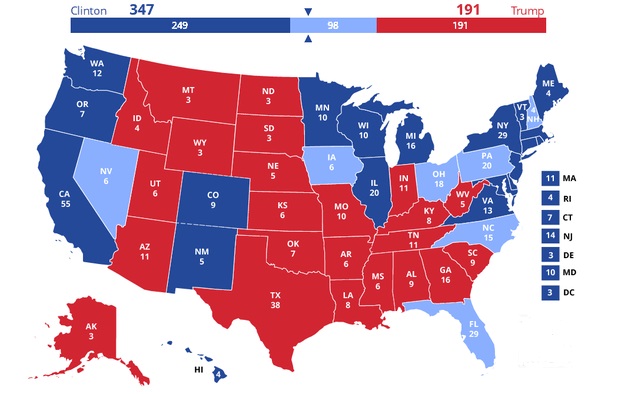
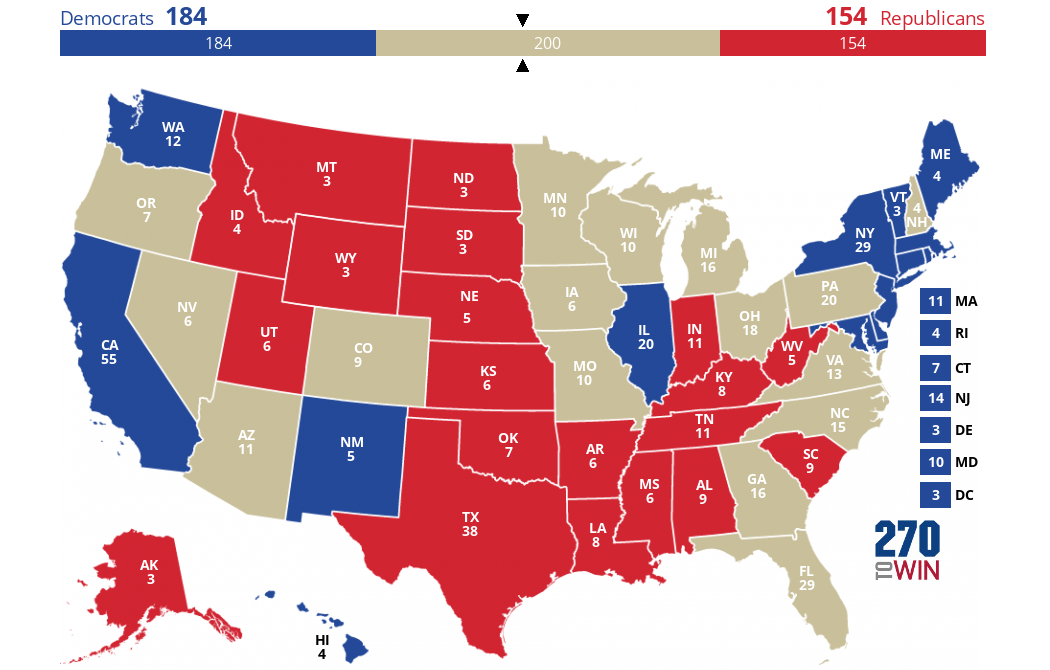
 Click the map to create your own at
Click the map to create your own at 